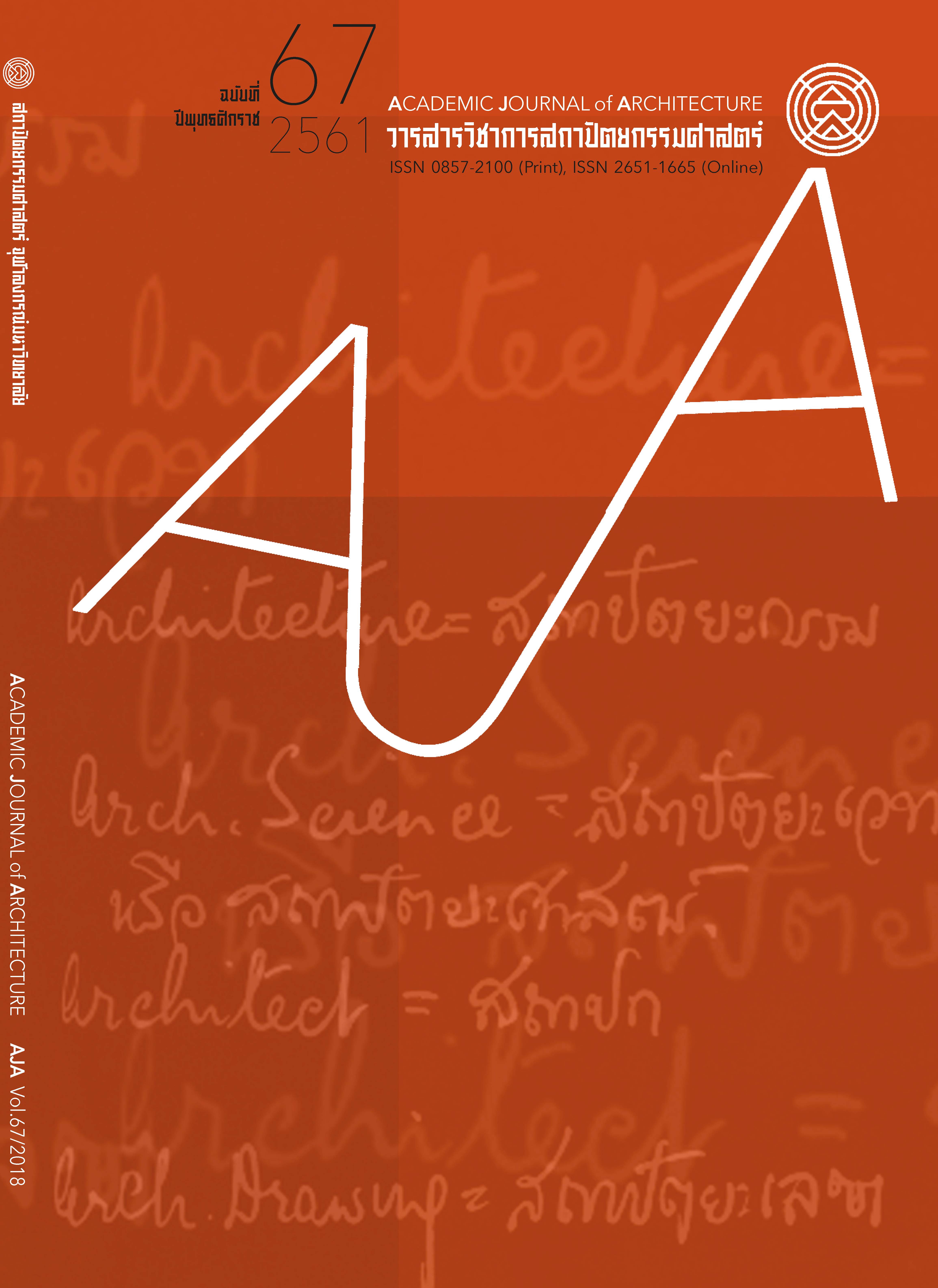Indoor Air Quality in Air-Conditioning Bedrooms
Main Article Content
Abstract
This research had an objective to study carbon dioxide gas accumulating in air-conditioned bedrooms without mechanical ventilation in houses since they were occupied in an air-conditioning stage for a long period. The methodology of the study was investigation in actual ten occupied houses. A scientific instrument was installed to measure hourly carbon dioxide level during occupation under air-conditioning stage. It was found that after two to three hours of occupation the carbon dioxide level reached over 1,000-1,100 ppm. At this point it was considered that the ventilation of those rooms were not enough. In cases of two, three and four occupants in bedrooms the carbon dioxide levels could reach 1,900 ppm, 2178 ppm and 2,665 ppm accordingly. These carbon dioxide levels had impact to occupants’ health. Therefore ventilation, bringing outside fresh air, in air-conditioned bedrooms was necessary.
Article Details
References
“คาร์บอนไดออกไซด์.” สืบค้น 14 มิถุนายน 2559. https://th.wikipedia.org/wiki/.
จุฑารัตน์ ฉัตรวิริยาวงศ์และวิวัฒน์ เอกบูรณะวัฒน์. “Carbon Dioxide.” สืบค้น 14 มิถุนายน 2559. https://www.summacheeva.org/index_thaitox_carbon_dioxide.htm.
“ส่วนประกอบของอากาศ.” สืบค้น 14 มิถุนายน 2559. https://mte.kmutt.ac.th/elearning/Internal%20Combustion%20Engine%20Part%20I/3_1.html.
“องค์ประกอบของอากาศ.” สืบค้น 14 มิถุนายน 2559. https://physicsworld.nanacity.com/physicsworld/lesson/world4.htm?ckattempt=1.
ACGIH (American Conference of Governmental Industrial Hygienists). TLVs and BEIs. Cincinnati, OH.: American Conference of Governmental Industrial Hygienists, 2011.
American Society of Heating, Refrigerating and Air-Conditioning Engineers. ANSI/ASHRAE 62.1-2016: Ventilation for Acceptable Indoor Air Quality. Atlanta, GA.: ASHRAE Headquarters, 2016.
“ASHRAE Technical FAQ.” Accessed July 1, 2016. https://www.ashrae.org/File%20Library/docLib/.../TC-04-03-FAQ-35.pd.
“Carbon Dioxide (CO2).” Accessed July 12, 2016. https://www.health.state.mn.us/divs/eh/indoorair/co2/.
Greiner, Tom. “Indoor Air Quality: Carbon Monoxide and Carbon Dioxide (AEN-125).” Accessed July 1, 2016.
https://www.abe.iastate.edu/extension-and-outreach/indoor-air-quality-carbon-monoxide-and-carbon-dioxide-aen-125/.
“Indoor Air Quality.” Accessed June 14, 2016. https://en.wikipedia.org/wiki/Indoor_air_quality.
Lipsett, M.J., Shusterman, D.J. and Beard, R.R. “Inorganic Compounds of Carbon, Nitrogen, and Oxygen.” In Patty’s Industrial Hygiene and Toxicology, G.D. Clayton and F.D. Clayton, eds. New York: John Wiley & Sons, 1994.
National Institute for Occupational Safety and Health. “Indoor Environmental Quality: Building Ventilation.” Accessed October 8, 2008. https://www.cdc.gov/niosh/topics/indoorenv/BuildingVentilation.html.
OSHA (Occupational Safety and Health Administration). “Sampling and Analytical Methods: Carbon Dioxide in Workplace Atmospheres.” Accessed May 7, 2012. https://www.osha.gov/dts/sltc/methods/inorganic/id172/id172.html.
Petty, Stephen. “Summary of ASHRAE’s Position on Carbon Dioxide (CO2) Levels in Spaces”. Accessed July 1, 2016. www.eesinc.cc/downloads/CO2positionpaper.pdf.
Prill, Rich. “Why Measure Carbon Dioxide Inside Buildings?” Accessed July 1, 2016. www.energy.wsu.edu/Documents/CO2inbuildings.pdf.
“Study: Bad In-Flight Air Exacerbated by Passengers.” Talk of the Nation, National Public Radio. September 21, 2007.
Usha, Satish, Mark J. Mendell, Krishnamurthy, Shekhar, Toshifumi, Hotchi, Douglas, Sullivan, Siegfried, Streufert and William J., Fisk. “Is CO2 an Indoor Pollutant? Direct Effects of Low-to-Moderate CO2 Concentrations on Human Decision-Making Performance.” Environ Health Perspect. Accessed July 13, 2016. DOI:10.1289/ehp.1104789. https://ehp.niehs.nih.gov/ 1104789/.


